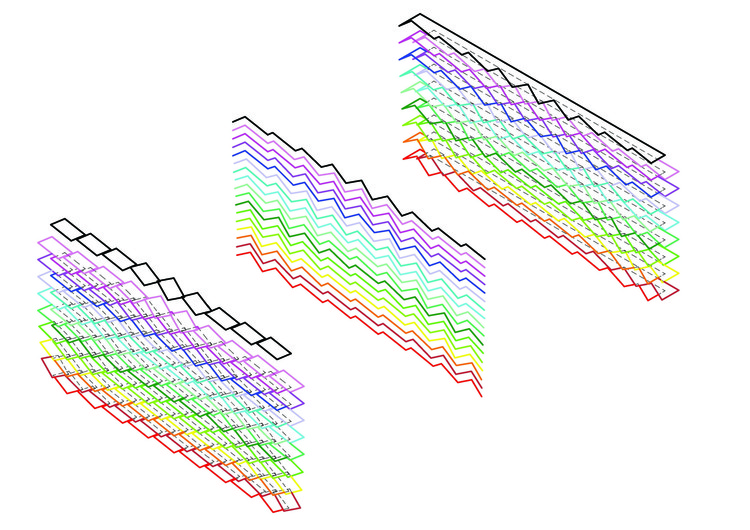
With their latest facade construction, Iranian architecture firm Sstudiomm explores the potential that brick can offer by utilizing parametric architecture. Instead of relying on unique construction elements for assembly on-site at a later date, in their new project (called, in full, "Negative Precision. On-Site Fabrication of a Parametric Brick Facade // A DIY for Architects") the firm considers how a simple mass-produced element like the brick can be assembled in unique ways by taking advantage of digital technology. While firms like Gramazio Kohler have already developed industrial methods of assembling brickwork following parametric designs, Sstudiomm aims for a more lo-fi approach, creating parametric brick walls using little more than the traditional construction methods found in Iran and a dose of ingenuity.

Iran has a long tradition of brick construction, as clay and lime mortar are among the most readily available materials in the country. Vernacular buildings, such as housing blocks, are generally made of plain brick walls, while landmark Iranian buildings are either built with traditional brick construction and coated with decorative plaster and tiles, or feature brickwork that forms geometrical patterns. But by using 3D modelling, Sstudiomm offers new alternatives to generate sophisticated brickwork patterns and make the ornamental character of Iranian architecture accessible to a larger part of the population.

As Sttudiomm’s facade for an apartment block in Damavand exemplifies, stencils allow the assembly of bricks into a geometric pattern. This construction technique had already been used by Archi-Union Architects when assembling concrete blocks for their AU Office and Exhibition Space, but Sstudiomm also proved that digital technology can open new fields to building industries that still rely on craft and traditional construction methods.

Sstudiomm demonstrates that stencils can provide a low-budget solution to the building of parametric walls. They developed the various patterns using a Grasshopper code that rotates the bricks between 9 and 27 degrees depending on their position within the pattern. Beside the laser cutting of stencils, the construction requires little new technology and mostly relies on local resources and crafts.

As a result of the hand-made assemblage, the finished parametric wall differs from the initial drawings, but Sstudiomm takes advantage of this lack of precision. Digital fabrication provides an excessive degree of precision, yet to some extent this precision is not necessarily visible to the human eye. On the other hand, whereas digital technology can be a luxury in the building industry, Sstudiomm’s construction method opens parametric design to a larger section of society. The Iranian firm even released open-source pattern and stencil designs on their website, providing architects with the essential tools for a DIY construction technique to build brick parametric walls.

Architect: Sstudiomm
Client: Z. Jabarpour + R. Naghavi
Location: Damavand, Iran
Construction: Behesht construction co. + sstudiomm
Construction Manager: Sadegh Naghavi@ Behesht co.
Photographs: Courtesy of Sstudiomm










.jpg?1468840391)









